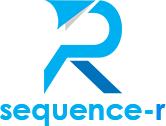In today’s digital world, staying competitive means staying ahead of the curve. As a B2B marketer or sales professional, you know the value of email marketing and lead generation for your business. But how can you leverage the latest trends and technologies to get more from your strategy? Let’s dive in!
A Glimpse into Future: Key Trends for B2B Email Marketing and Lead Generation
Email marketing and lead generation have evolved remarkably over the past decade. It’s all about being able to anticipate what’s next – and being ready to adapt when it arrives. With an eye on future trends, we’ll guide you through actionable insights to build effective strategies.
1. Personalisation is the New Norm
Greater depth in personalising email marketing messages is a must for 2025. The days of ‘Dear Customer’ are long gone. Now, you need to personalise your messaging down to the most finite details, such as the recipient’s behaviour on your site, their past purchases or their business needs. Sophisticated tools like HubSpot and MailChimp’s automation features are perfect to personalise your campaigns seamlessly.
2. Power of Predictive Analytics
Predictive analytics isn’t just for forecasting sales anymore. Today, you can use this powerful tool to hone your lead generation approach, forecast customer behaviours and even target future leads. Are you leveraging predictive analytics in your marketing strategy yet?
3. Interactivity and Engagement
Email marketing in 2025 is no longer only about communicating information; it’s also about engaging your leads and clients effectively. Interactive elements like quizzes, polls or GIFs can help boost your emails’ click-through rates (CTRs) and overall engagement. The resulting data can also provide valuable insights about your audience.
Stepping Up Your Game: Best Practices for B2B Email Marketing and Lead Generation
We’ve covered trends; now, let’s talk about some best practices you can adopt to optimise your email marketing and lead generation strategies.
1. Segmented Email Lists
Segmentation is a proven method to increase the efficiency of your email campaigns. By grouping potential customers based on specific criteria like geographical location or purchasing habits, you can create more targeted and effective emails.
2. Focusing on Mobile Optimisation
With the significant increase in mobile users, it’s vital to optimise your email campaigns for mobile devices. Ensure your emails are easily readable and interactive elements function flawlessly on all devices.
3. Strengthening your CTA
A compelling Call To Action (CTA) is central to lead generation. Your CTA needs to be clear, concise and make it as easy as possible for your potential customer to take the desired action.
Frequently Asked Questions
Q: How can I improve my B2B email marketing strategy?
A: Start by personalising your emails, segmenting your lists, using compelling and clear CTAs and optimising for mobile devices. Keep a check on current trends in email marketing to stay ahead.
Q: What tools can I use to analyse my lead generation efforts?
A: Numerous tools are available to help you track and analyse your lead generation results. Some popular ones are Salesforce, HubSpot and Google Analytics. Each of these provides vital insights that can help you refine and improve your strategy.
Q: How do I keep my email subscribers engaged?
A: Increase interactivity in your emails by including elements like quizzes, GIFs, or videos and offer useful, relevant content. Keep your readers hooked with regular updates and don’t forget to analyse your subscriber engagement metrics regularly.
In conclusion, the landscape of email marketing and lead generation is ever-evolving. Stay ahead of the game by understanding technology trends and adopting the best practices suited to your business. While the tips mentioned in this post are key, remember that the ‘best’ approach largely depends on your specific business needs and audience.
Here’s to successful lead generation and email marketing campaigns for B2B marketers and sales professionals!

